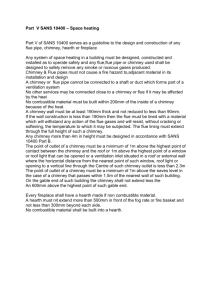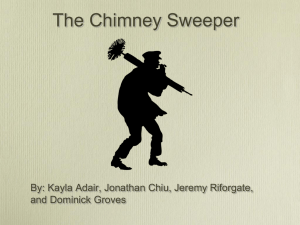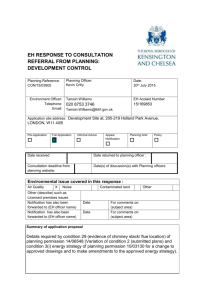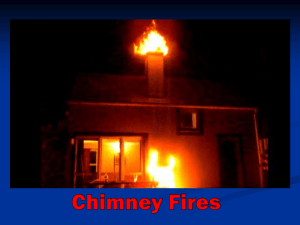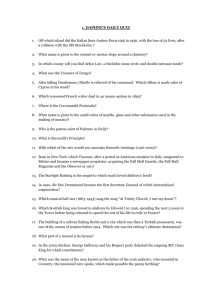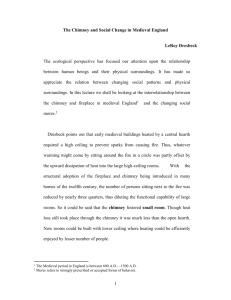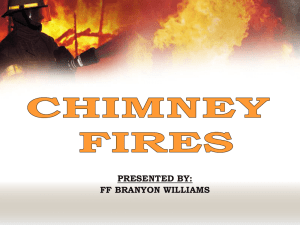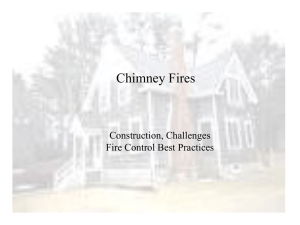Ch.20-Appliance Chimneys Study Guide
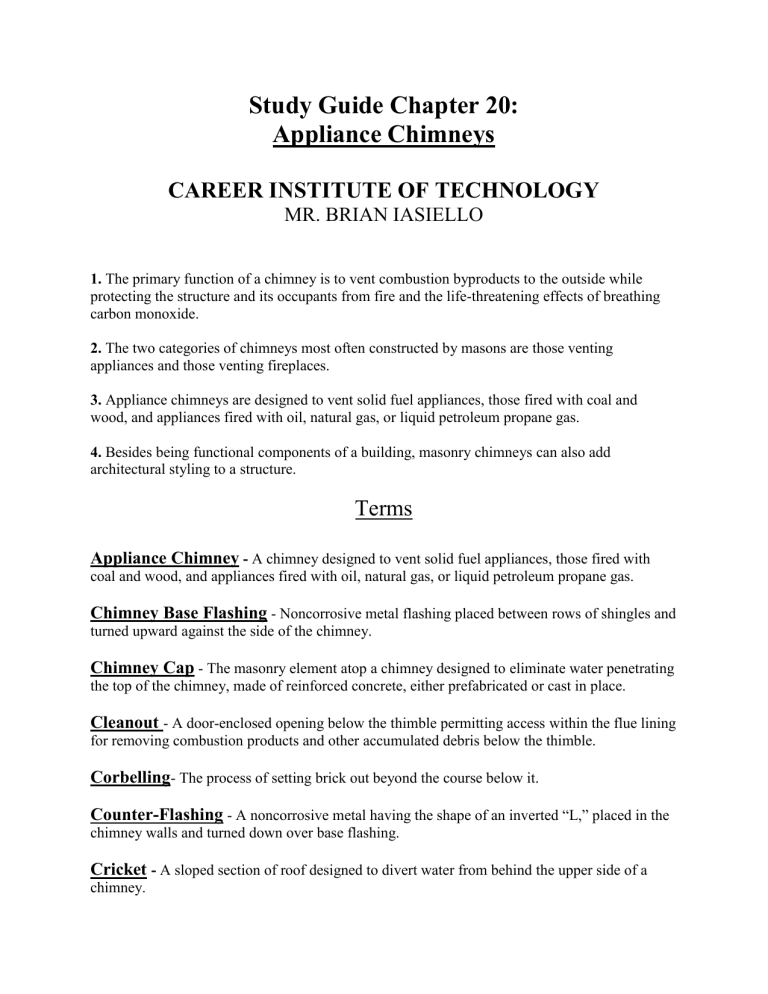
Study Guide Chapter 20:
Appliance Chimneys
CAREER INSTITUTE OF TECHNOLOGY
MR. BRIAN IASIELLO
1.
The primary function of a chimney is to vent combustion byproducts to the outside while protecting the structure and its occupants from fire and the life-threatening effects of breathing carbon monoxide.
2.
The two categories of chimneys most often constructed by masons are those venting appliances and those venting fireplaces.
3.
Appliance chimneys are designed to vent solid fuel appliances, those fired with coal and wood, and appliances fired with oil, natural gas, or liquid petroleum propane gas.
4.
Besides being functional components of a building, masonry chimneys can also add architectural styling to a structure.
Terms
Appliance Chimney
- A chimney designed to vent solid fuel appliances, those fired with coal and wood, and appliances fired with oil, natural gas, or liquid petroleum propane gas.
Chimney Base Flashing
- Noncorrosive metal flashing placed between rows of shingles and turned upward against the side of the chimney.
Chimney Cap
- The masonry element atop a chimney designed to eliminate water penetrating the top of the chimney, made of reinforced concrete, either prefabricated or cast in place.
Cleanout
- A door-enclosed opening below the thimble permitting access within the flue lining for removing combustion products and other accumulated debris below the thimble.
Corbelling
- The process of setting brick out beyond the course below it.
Counter-Flashing
- A noncorrosive metal having the shape of an inverted “L,” placed in the chimney walls and turned down over base flashing.
Cricket
A sloped section of roof designed to divert water from behind the upper side of a chimney.
Cross-Sectional Area
- The area derived from the length and width as measured from inside the walls of the flue lining.
Fireclay
- Clay capable of withstanding high temperatures used for chimney flue liners and chimney thimbles.
Fireblocking
- Also called fire stopping, a noncombustible material preventing air drafts and the potential spread of smoke and fire between floors or ceilings.
Flue Lining
- A rectangular or round, hollow chimney lining intended to contain the combustion products and protect the chimney walls from heat and corrosion.
Thimble
A round, fired clay chimney component attached horizontally from the flue lining to the face of the wall into which the appliance connector is inserted.
Outline
A.
Chimney Support:
1.
A concrete footing supporting a chimney should be a minimum of 12” thick and extend a minimum of 6” beyond the chimney walls.
B.
Chimney Wall:
1.
The walls for a masonry chimney must be constructed of solid masonry units, those with a cross-sectional area of 75 percent or more of the bed area.
C.
Chimney Linings:
1.
Flue linings are made of fireclay, clay capable of withstanding high temperatures, with walls being a minimum of 5⁄8” thick.
2.
Allow time for flue linings of newly constructed chimneys to be free of accumulated moisture before operating a connected wood burning appliance where much heat can escape. Excessive heat may possibly vaporize moisture in flue lining material, causing it to crack. Never start a rapid burning, hot fire in an appliance connected to a cold chimney, because sudden and great temperature changes may also cause flue linings to fracture.
D.
Cleanout Openings:
1.
A cleanout opening having a minimum height of 6” should be located within 6” of the base of the chimney and at least 6” below the thimble.
E.
Chimney Thimbles:
1.
A fireclay thimble is a round, fired clay chimney component attached horizontally from the flue lining to the face of the wall into which the appliance connector is inserted.
F.
Chimney Height:
1.
A chimney should extend a minimum of 3’ above the highest point where it penetrates the roofline and at least 2’ higher than any part of the structure within 10’.
G.
Constructing an Appliance Chimney:
1.
Placing the Footings: a) CAUTION!Working in ground excavations where chimneys are likely to begin pose safety hazards that must be addressed. The surrounding ground must be examined by a competent person for indications of potential cave-ins. Where there is a potential for cave-ins and in excavations 5’ or more in depth, protective systems meeting the intent of OSHA Standards must be used.
2.
Laying Out the Chimney Walls: a) Joint width should be no less than ¼” or more than ½”
3.
Building the Brick Walls: a) Brick should be bedded within 1 minute or so of spreading mortar b) For every course, the four corners are aligned plumb and each of the four sides
is aligned straight and level.
4 . Providing a Cleanout Opening
5.
Installing Clay Flue Linings: a) The first flue lining must be installed ensuring at least an 8” extension of the flue below the bottom edge of the thimble. b)
An air space no less than ½” or greater should be maintained between the flue and the backsides of the exterior chimney walls. c)
2’ section of flue lining is bonded with medium refractory mortar. d) When two or more flues are located in the same chimney, a minimum of 4” of
masonry shall be built between flue linings.
6.
Installing Clay Thimbles: a) A minimum of 12” of solid masonry surrounding the thimbles. b) Minimum distance between a thimble and the room ceiling above it be 18”.
7.
Anchoring a Chimney: a) Corrosion-resistant wall ties to the structure’s framework spaces at 16” on
center.
8.
Topping Out a Chimney:
9.
Installing Chimney Flashing: a) Counter flashing b) Chimney base flashing
10. Providing a Chimney Cricket:
CAUTION!
When replacing existing chimney caps, never block the chimney opening itself. The building’s occupants may suffer carbon monoxide poisoning if gases are not vented through the flue to the outside.
